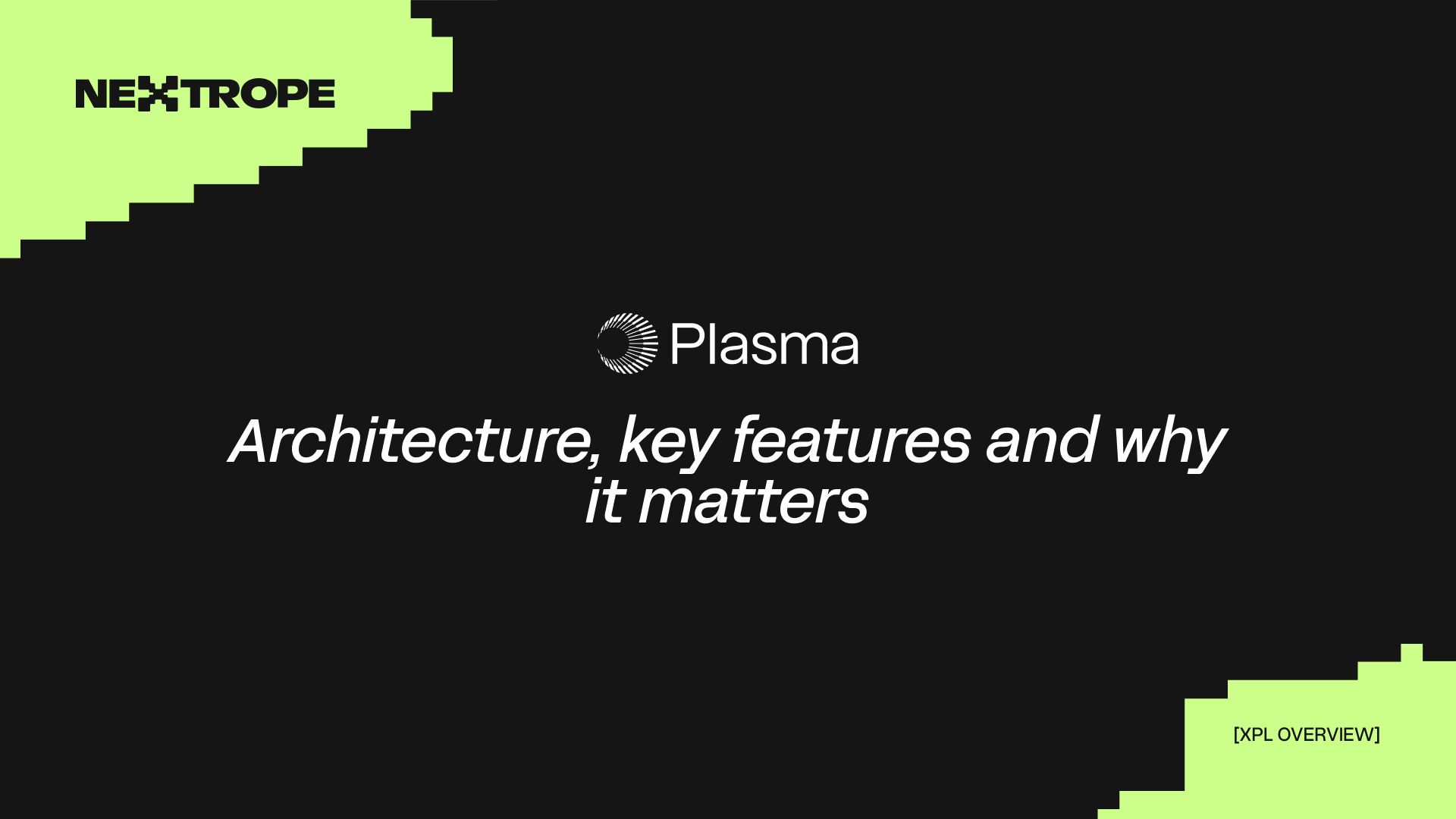What is Plasma?
Plasma is a Layer-1 blockchain built specifically for stablecoin infrastructure combining Bitcoin-level security with EVM compatibility and ultra-low fees for stablecoin transfers.
Why Plasma Blockchain Was Created?
Existing blockchains (Ethereum, L2s, etc.) weren’t originally designed around stablecoin payments at scale. As stablecoins grow, issues like congestion, gas cost, latency, and interoperability become constraints. Plasma addresses these by being purpose-built for stablecoin transfers, offering features not found elsewhere.
- Zero-fee transfers (especially for USDT)
- Custom gas tokens (separate from XPL, to reduce friction)
- Trust-minimized Bitcoin bridge (to allow BTC collateral use)
- Full EVM compatibility smart contracts can work with minimal modifications
Plasma’s Architecture & Core Mechanisms
EVM Compatibility + Smart Contracts
Developers familiar with Ethereum tooling (Solidity, Hardhat, etc.) can deploy contracts on Plasma with limited changes making it easy to port existing dApps or DeFi, similar to other EVM-compatible infrastructures discussed in the article „The Ultimate Web3 Backend Guide: Supercharge dApps with APIs”.
Gas Model & Token Mechanism
Instead of forcing users always to hold XPL for gas, Plasma supports custom gas tokens. For stablecoin-native flows (e.g. USDT transfers), there is often zero fee usage, lowering UX friction.
Bitcoin Bridge & Collateral
Plasma supports a Bitcoin bridge that lets BTC become collateral inside smart contracts (like pBTC). This bridges the security of Bitcoin with DeFi use cases within Plasma.
This makes Plasma a “Bitcoin-secured blockchain for stablecoins”.
Security & Finality
Plasma emphasizes finality and security, tuned to payment workloads. Its consensus and architecture aim for strong protection against reorgs and double spends while maintaining high throughput.
The network launched mainnet beta holding over $2B in stablecoin liquidity shortly after opening.
Plasma Blockchain vs Alternatives: What Makes It Stand Out?
| Feature | Plasma (XPL) | Other L1 / L2 |
| Stablecoin native design | ✅ | usually second-class |
| Zero fees for stablecoin transfers | ✅ | rare, or subsidized |
| BTC bridge (collateral) | ✅ | only some chains |
| EVM compatibility | ✅ | yes in many, but with trade-offs |
| High liquidity early | ✅ (>$2B TVL) | many chains struggle to bootstrap |
These distinctions make Plasma especially compelling for institutions, stablecoin issuers, and DeFi innovators looking for scalable, low-cost, secure payments infrastructure.
Use Cases: What You Can Build with Plasma Blockchain
- Stablecoin native vaults / money markets
- Payment rails & cross-border settlement
- Treasury and cash management flows
- Bridged BTC-backed stablecoin services
- DeFi primitives (DEX, staking, yield aggregation) optimized for stablecoins
If you’re building any product reliant on stablecoin transfers or needing strong collateral backing from BTC, Plasma offers a compelling infrastructure foundation.
Get Started with Plasma Blockchain: Key Steps & Considerations
- Smart contract migration: assess if existing contracts can port with minimal changes.
- Gas token planning: decide whether to use USDT, separate gas tokens, or hybrid models.
- Security & audit: focus on bridge logic, reentrancy, oracle risks.
- Liquidity onboarding & market making: bootstrap stablecoin liquidity, incentives.
- Regulation & compliance: stablecoin issuance may attract legal scrutiny.
- Deploy MVP & scale: iterate fast, measure gas, slippage, UX, security.



